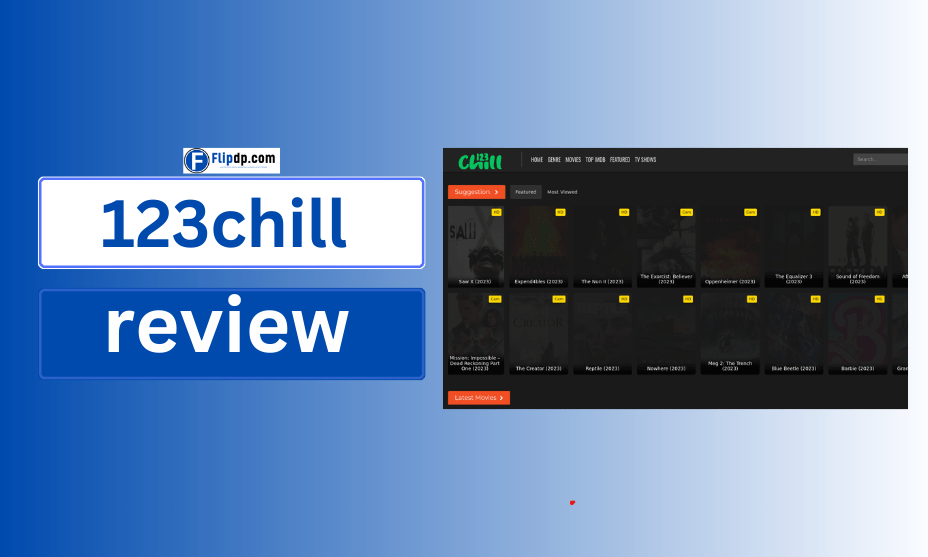In the world of digital advertising, Google Ads stands as a titan, offering businesses a way to reach their target audience effectively. However, achieving successful ad placements involves more than just bidding for keywords. Enter Quality Score—a pivotal metric that can dramatically influence your ad performance and costs. In this comprehensive guide, we’ll delve into how to check Quality Score in Google Ads, elucidating its importance, how it’s calculated, and best practices for improvement.
Understanding Quality Score: What It Is and Why It Matters

Quality Score is a critical rating that Google assigns to your ads, keywords, and landing pages. This score ranges from 1 to 10, with 10 being the highest. It essentially measures how relevant and useful your ads are to the users who see them. A higher Quality Score can lead to better ad placements, lower costs per click (CPC), and improved ad visibility.
Why Quality Score Matters
- Cost Efficiency: A higher Quality Score often results in a lower CPC. This means that you can achieve more clicks and conversions for your advertising budget.
- Ad Placement: Google favors ads with high Quality Scores, leading to better positions on the search results page. This means your ads are more likely to be seen by potential customers.
- Performance Metrics: Quality Score can be an indicator of the overall health of your Google Ads campaigns. Monitoring it can help you identify areas for improvement.
The Importance of Quality Score in Google Ads

Quality Score is not just a number; it encapsulates several key performance indicators (KPIs) that affect your advertising success. Here are some reasons why it’s essential to keep track of your Quality Score:
- Ad Relevance: Google assesses how closely your ad copy matches the user’s search query. This relevance boosts your ad’s chances of being clicked, which is crucial for conversions.
- Expected Click-Through Rate (CTR): Google predicts how likely it is that users will click your ad. Higher expected CTR can lead to a higher Quality Score.
- Landing Page Experience: Google evaluates the quality of your landing page, considering factors like load time, content quality, and overall user experience.
By understanding these components, you can see that Quality Score is intertwined with every aspect of your Google Ads strategy.
How Google Calculates Quality Score: Key Factors Explained
Google utilizes various factors to calculate your Quality Score. Understanding these components will help you focus on what matters most.
1. Ad Relevance
- Definition: This measures how closely your ad matches the intent of the user’s search query.
- Example: If a user searches for “best running shoes,” an ad that directly addresses running shoes is deemed more relevant than a general footwear ad.
2. Expected CTR
- Definition: This prediction is based on historical data regarding how often users click on your ads compared to others that appear for the same keywords.
- Example: If your ad for “affordable fitness gear” typically receives a high number of clicks, Google will rate it favorably for expected CTR.
3. Landing Page Experience
- Definition: Google analyzes your landing page to determine if it provides a good user experience.
- Factors Considered:
- Load times
- Mobile-friendliness
- Relevant and original content
- Clear navigation
Accessing Your Google Ads Account: A Quick Overview

To check your Quality Score, you’ll first need access to your Google Ads account. Here’s how to get started:
- Sign in to Google Ads: Use your Google account credentials.
- Navigate to the Campaigns Tab: Once logged in, click on the “Campaigns” tab to see your active campaigns.
Navigating the Google Ads Dashboard: Step-by-Step
The Google Ads dashboard can seem overwhelming at first, but understanding its layout will facilitate your analysis of Quality Score.
Step 1: Go to the Campaigns Section
- Click on Campaigns on the left sidebar. This area displays all your current campaigns and their performance metrics.
Step 2: Select the Desired Campaign
- Click on the campaign you wish to analyze. This action will bring up various performance metrics for that specific campaign.
Step 3: Access Ad Groups
- Once inside the campaign, click on the Ad Groups tab to view the individual ad groups within your campaign.
Finding Your Campaigns: Where to Look for Quality Score
Quality Score can be found in the Keywords section of your Google Ads dashboard. Here’s how to access it:
- Navigate to Keywords: From your selected campaign, click on the Keywords tab.
- Add the Quality Score Column:
- Click on the columns icon (three vertical lines) above the performance table.
- Select Modify columns.
- Under the Quality Score section, check the box next to Quality Score and any other relevant metrics you wish to monitor.
- Click Apply to save your changes.
Understanding the Quality Score Column: What You Need to Know
Once you’ve added the Quality Score column, you’ll see ratings for each keyword in your campaign. Here’s what to keep in mind:
- 1-10 Rating: A score of 1 indicates very poor quality, while a score of 10 signifies excellent quality.
- How to Interpret:
- 1-3: Critical issues exist. Immediate changes are necessary.
- 4-6: Average performance. Target areas for improvement.
- 7-10: Good performance. Maintain and optimize further.
Analyzing Ad Groups: Breaking Down Quality Scores
After understanding individual keywords, it’s crucial to analyze the overall Quality Score at the ad group level. This analysis helps in identifying broader trends and areas for improvement.
- Group Performance: Review the Quality Scores of all keywords within an ad group. This can highlight if specific keywords are dragging down the overall score.
- Adjustments: Consider pausing or optimizing keywords that significantly lower the ad group’s Quality Score.
Interpreting Quality Score Metrics: A Comprehensive Guide
Understanding Quality Score metrics can help you devise a strategic approach to enhance your ad performance.
Key Metrics to Monitor
- Quality Score: Direct representation of ad relevance, expected CTR, and landing page experience.
- Average CPC: How much you’re paying per click on your ads.
- Ad Position: Where your ad appears in the search results relative to others.
Common Misconceptions
- High Bid = High Quality Score: A high bid alone doesn’t guarantee a high Quality Score. Relevance and user experience are paramount.
- One-Time Check: Quality Score is dynamic and should be monitored regularly to adapt to market changes.
How to Improve Your Quality Score: Best Practices
Improving your Quality Score is an ongoing process. Here are actionable strategies to enhance your score:
- Refine Ad Copy: Ensure your ad text is directly relevant to the keywords you’re targeting.
- Optimize Landing Pages:
- Ensure fast load times and mobile responsiveness.
- Provide valuable and relevant content that matches user intent.
- Conduct Regular Keyword Research: Identify high-performing keywords and consider adding long-tail keywords for better targeting.
Common Issues Affecting Quality Score and How to Fix Them
Identifying and resolving common issues affecting your Quality Score can lead to significant improvements.
1. Low Ad Relevance
- Issue: Ads that don’t closely match user queries receive lower scores.
- Fix: Regularly review your keyword list and adjust your ad copy accordingly.
2. Poor Landing Page Experience
- Issue: If users bounce quickly from your landing page, Google sees it as a poor experience.
- Fix: Use A/B testing to refine landing pages and ensure they provide valuable content.
3. Low Expected CTR
- Issue: If your ads have a low CTR compared to competitors, your Quality Score may suffer.
- Fix: Experiment with different ad formats and calls to action (CTAs) to boost engagement.
Using Google Ads Reports to Monitor Quality Score Trends
Regular reporting can provide insights into how your Quality Score changes over time.
Setting Up Quality Score Reports
- Access Reports: In your Google Ads dashboard, navigate to the Reports section.
- Create a Custom Report:
- Select the Quality Score metric along with other relevant KPIs.
- Save the report to regularly monitor your Quality Score trends.
The Role of Keywords in Quality Score Evaluation
Keywords are the backbone of Google Ads, and their relevance is critical for maintaining a high Quality Score.
Best Practices for Keyword Management
- Use Exact Match Keywords: This ensures that your ads show for highly relevant searches. By focusing on exact match keywords, you reduce the chances of your ads appearing for unrelated search queries. This targeted approach enhances both ad relevance and expected CTR, contributing positively to your Quality Score.
- Implement Negative Keywords: Adding negative keywords prevents your ads from appearing in irrelevant searches. This practice not only saves budget but also improves your overall Quality Score by ensuring that your ads are shown to a more relevant audience.
- Regularly Review Keyword Performance: Monitor the performance of your keywords frequently. Use Google Ads’ reporting tools to identify which keywords are underperforming in terms of Quality Score. Pause or remove keywords that consistently receive low scores to improve your ad group’s overall performance.
- Incorporate Long-Tail Keywords: Long-tail keywords are typically less competitive and can lead to higher conversion rates. By targeting these specific phrases, you increase the relevance of your ads to potential customers, which can improve both CTR and Quality Score.
- Group Similar Keywords: Organizing your keywords into tightly themed ad groups ensures that your ads and landing pages remain highly relevant to the search queries. This specificity not only helps in improving Quality Score but also enhances user experience.
Creating High-Quality Ads: Tips for Better Performance
Creating compelling ads is essential for improving your Quality Score. Here are some tips to keep in mind:
1. Use Strong Headlines
- Attention-Grabbing: Craft headlines that capture attention and include target keywords. Make sure they address the user’s needs and interests. A strong headline can significantly impact click-through rates, which in turn affects your Quality Score.
2. Include CTAs
- Encourage Action: Use clear calls to action that compel users to click on your ad. Phrases like “Learn More,” “Get Started,” or “Sign Up Today” create a sense of urgency and guide users toward the desired action.
3. Leverage Ad Extensions
- Enhance Visibility: Utilize sitelink, callout, and structured snippet extensions to provide additional information. Ad extensions not only improve visibility but also give potential customers more reasons to engage with your ads, enhancing CTR and, ultimately, Quality Score.
4. A/B Test Your Ads
- Optimize Performance: Run A/B tests on different versions of your ads to identify what resonates best with your audience. Analyze the results and refine your ads based on the performance data to ensure you’re continually improving engagement.
Landing Page Experience: Impact on Your Quality Score
Your landing page plays a crucial role in determining your Quality Score. Here’s how to optimize it:
Key Elements of a High-Quality Landing Page
- Fast Load Times: Ensure that your landing page loads quickly. Google considers page speed a ranking factor, and slow-loading pages can lead to high bounce rates and lower Quality Scores.
- Mobile Optimization: With an increasing number of users accessing content via mobile devices, ensure your landing page is mobile-friendly. A responsive design that adapts to different screen sizes enhances user experience and can positively influence Quality Score.
- Relevant and Original Content: Your landing page should contain content that directly relates to the keywords and ad copy. Providing valuable information that fulfills user intent will improve user engagement and satisfaction.
- Clear Navigation: A well-structured landing page should guide users seamlessly to the information or action you want them to take. Confusing layouts can frustrate visitors and lead to higher bounce rates.
- Strong Visuals: Use high-quality images and videos to complement your content. Engaging visuals can enhance user experience and keep visitors on your page longer, contributing positively to your Quality Score.
Optimizing Ad Relevance: Strategies for Improvement
Ensuring that your ads are relevant to your target audience is essential for achieving a high Quality Score. Here are effective strategies to improve ad relevance:
1. Tailor Your Ad Copy
- Match User Intent: Write ad copy that closely aligns with the keywords being targeted. This alignment demonstrates to Google that your ad is relevant to the search query, improving Quality Score.
2. Utilize Dynamic Keyword Insertion
- Enhance Relevance: Implement dynamic keyword insertion (DKI) to automatically update your ad text with the keywords searched by users. This technique can significantly enhance ad relevance and encourage higher CTR.
3. Regularly Update Your Ads
- Stay Current: Review and update your ads regularly to reflect changes in products, services, or user preferences. Fresh and relevant ads are more likely to engage users and maintain a high Quality Score.
4. Use Audience Targeting
- Refine Your Reach: Implement audience targeting options in Google Ads to reach specific demographics or interests. This targeted approach can increase ad relevance and CTR, further enhancing Quality Score.
Utilizing Google Ads Tools to Track Quality Score
Several tools within Google Ads can help you monitor and optimize your Quality Score effectively.
1. Google Ads Dashboard
- Overview: Use the Google Ads dashboard to get a snapshot of your campaign performance, including Quality Score metrics.
2. Quality Score Reports
- In-Depth Analysis: Create custom reports focused on Quality Score to analyze performance over time and identify trends or issues that need addressing.
3. Recommendations Tab
- Actionable Insights: Utilize the Recommendations tab in your Google Ads account to receive suggestions for improving your Quality Score based on your current performance.
4. Keyword Planner
- Keyword Research: The Keyword Planner tool can help identify high-potential keywords that align with your target audience and improve your Quality Score.
How to Set Up Alerts for Quality Score Changes
Monitoring changes in your Quality Score is essential for maintaining optimal ad performance. Setting up alerts can help you stay informed.
Step-by-Step Guide to Setting Up Alerts
- Access Your Google Ads Account: Log in to your Google Ads account.
- Navigate to the Tools Section: Click on the wrench icon in the top right corner to access the tools menu.
- Select ‘Rules’: Under the ‘Bulk Actions’ section, click on ‘Rules.’
- Create a New Rule: Click on the blue plus sign (+) to create a new rule.
- Choose Quality Score as the Metric: Set the condition to alert you when your Quality Score drops below a certain threshold (e.g., below 5).
- Define Notification Preferences: Choose how you want to be notified (email, in-app notification, etc.).
- Save Your Rule: Click on ‘Save’ to activate your alert.
With alerts in place, you can proactively address issues affecting your Quality Score and ensure your campaigns remain competitive.
Case Studies: Success Stories of Improved Quality Scores
Understanding how other businesses have successfully improved their Quality Scores can provide valuable insights. Here are a few case studies that highlight effective strategies:
Case Study 1: E-Commerce Retailer
Challenge: An e-commerce retailer was struggling with low Quality Scores due to poor ad relevance and landing page experience.
Solution: The retailer optimized ad copy to better align with targeted keywords and revamped their landing page to improve load times and user experience.
Outcome: The Quality Score improved from an average of 4 to 8 within three months, leading to a 30% increase in CTR and a 20% reduction in CPC.
Case Study 2: Local Service Provider
Challenge: A local service provider faced challenges with their ad performance due to low expected CTR.
Solution: They implemented A/B testing for their ads and focused on incorporating strong CTAs and local targeting options.
Outcome: After three months, the Quality Score increased from 5 to 9, resulting in a 50% boost in conversions.
Conclusion
In conclusion, understanding how to check Quality Score in Google Ads is essential for any marketer or business owner looking to maximize their ad performance. By focusing on key components like ad relevance, expected CTR, and landing page experience, you can improve your Quality Score and, in turn, your overall advertising effectiveness.
FAQs, how to check quality score in google ads
1. What is Google Ads Quality Score?
Google Ads Quality Score is a metric that evaluates the quality and relevance of your ads, keywords, and landing pages. It ranges from 1 to 10, with higher scores indicating better ad relevance and performance potential.
2. How can I check my Quality Score in Google Ads?
To check your Quality Score:
Log in to your Google Ads account.
Navigate to the “Keywords” tab.
Add the “Quality Score” column by clicking on “Columns” and selecting “Modify Columns.”
Under “Attributes,” select “Quality Score” and apply.
3. What factors affect my Quality Score?
The Quality Score is primarily influenced by three factors:
Expected click-through rate (CTR): The likelihood that your ad will be clicked when shown.
Ad relevance: How closely your ad matches the intent behind a user’s search.
Landing page experience: The quality and relevance of the landing page users are directed to after clicking your ad.
4. How often is Quality Score updated?
Google Ads updates your Quality Score frequently based on performance data, including clicks and impressions. However, Quality Score is not updated in real-time but rather periodically as Google Ads collects more data.
5. What is a good Quality Score in Google Ads?
A Quality Score of 7 or higher is generally considered good. Scores between 1-6 indicate room for improvement in ad relevance, landing page experience, or expected CTR.











